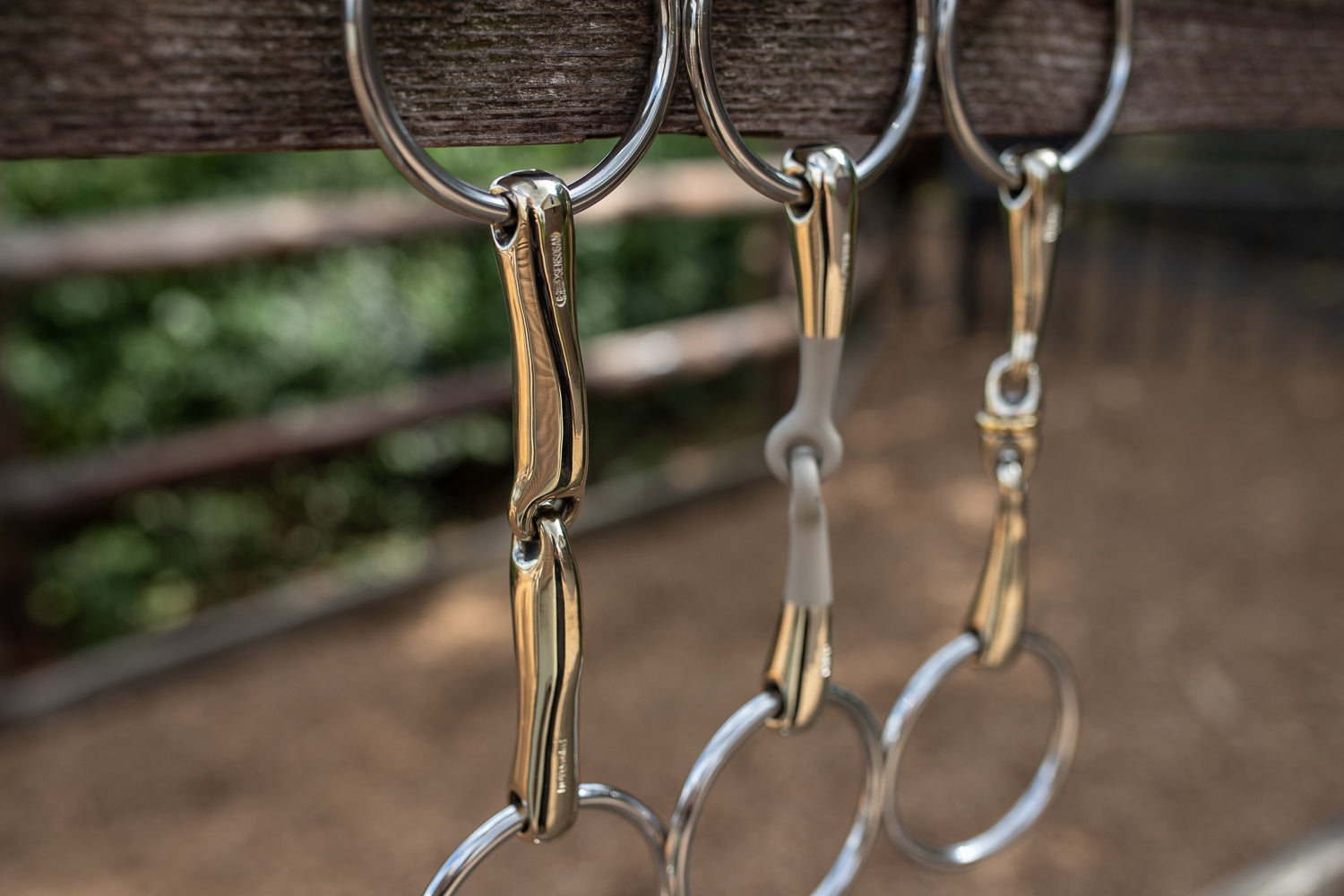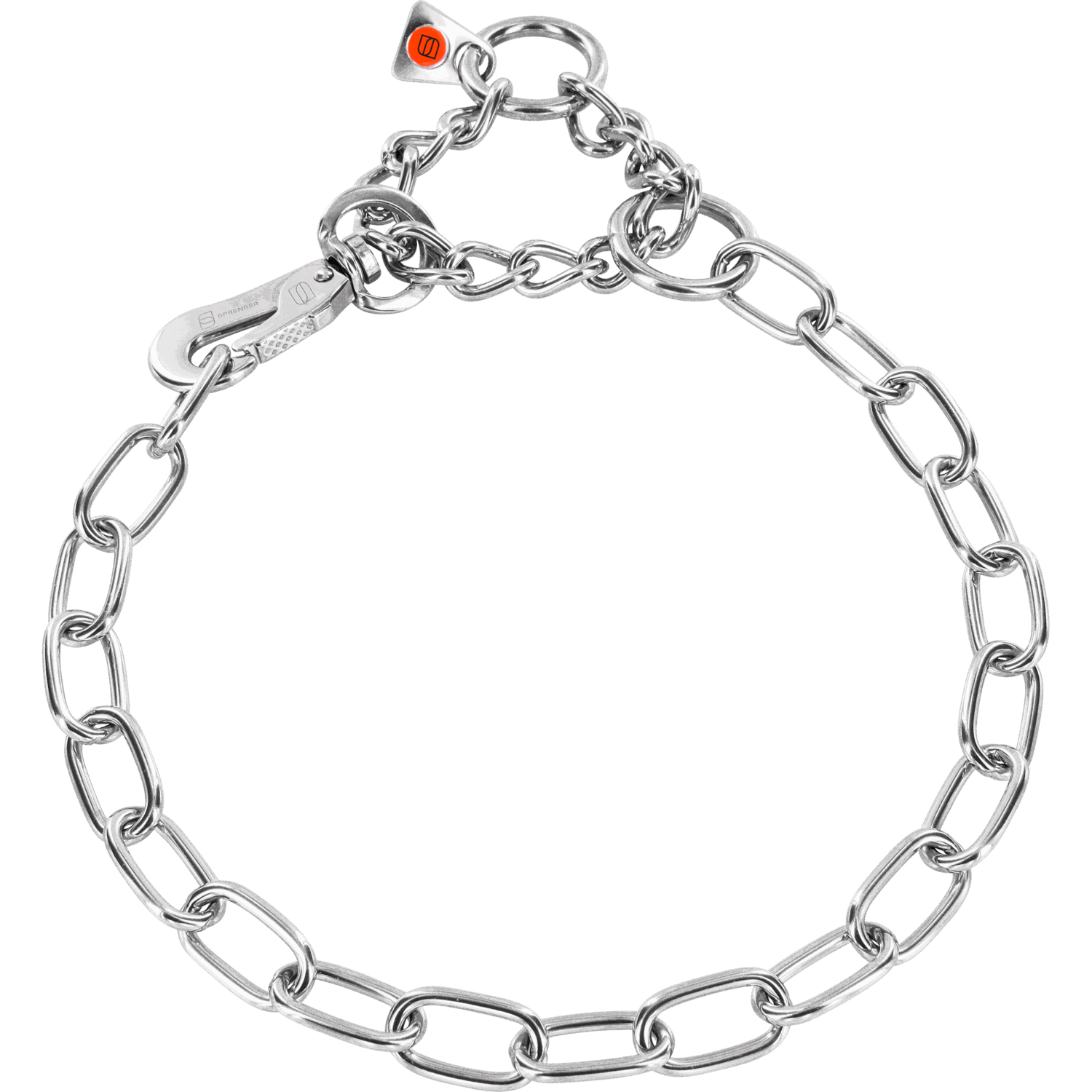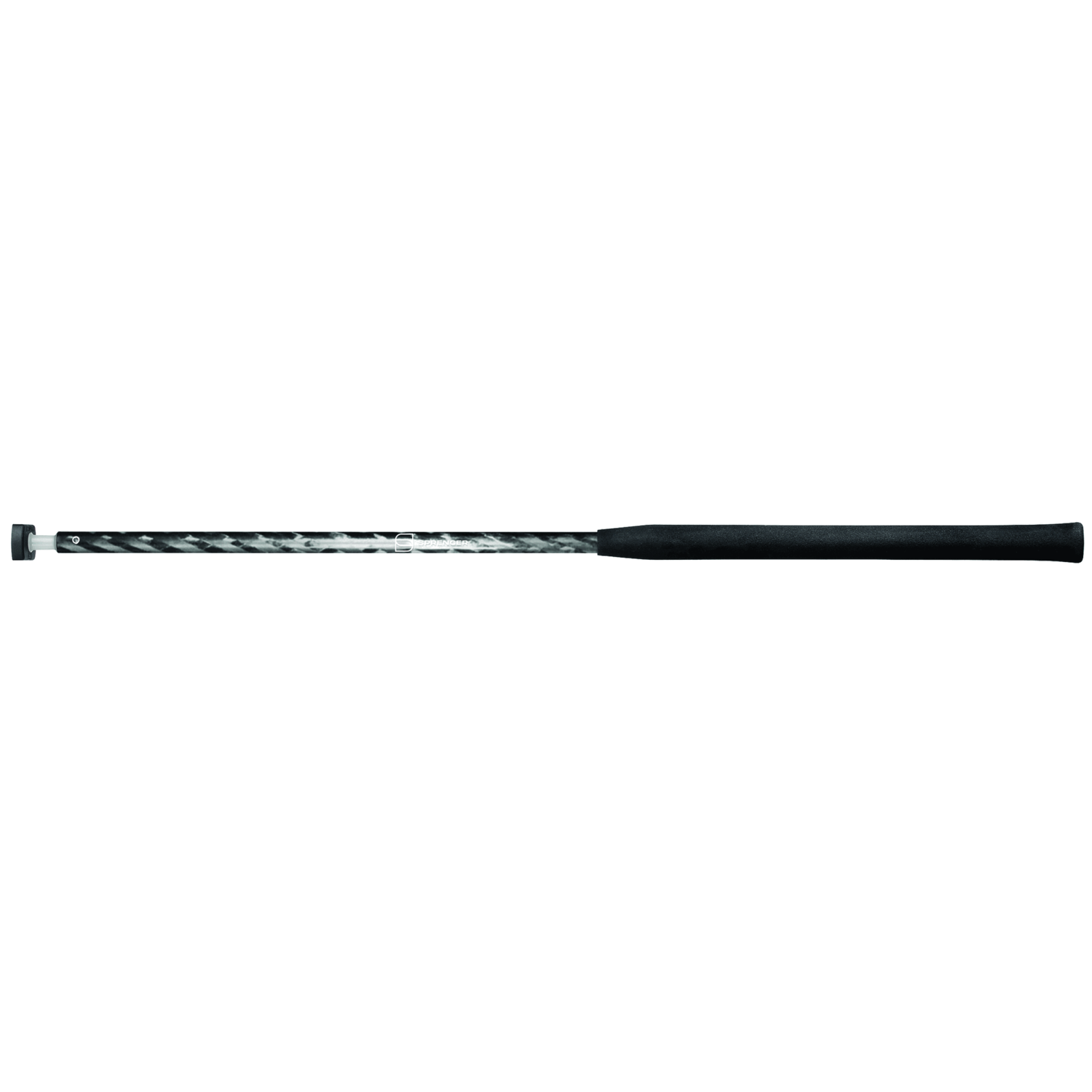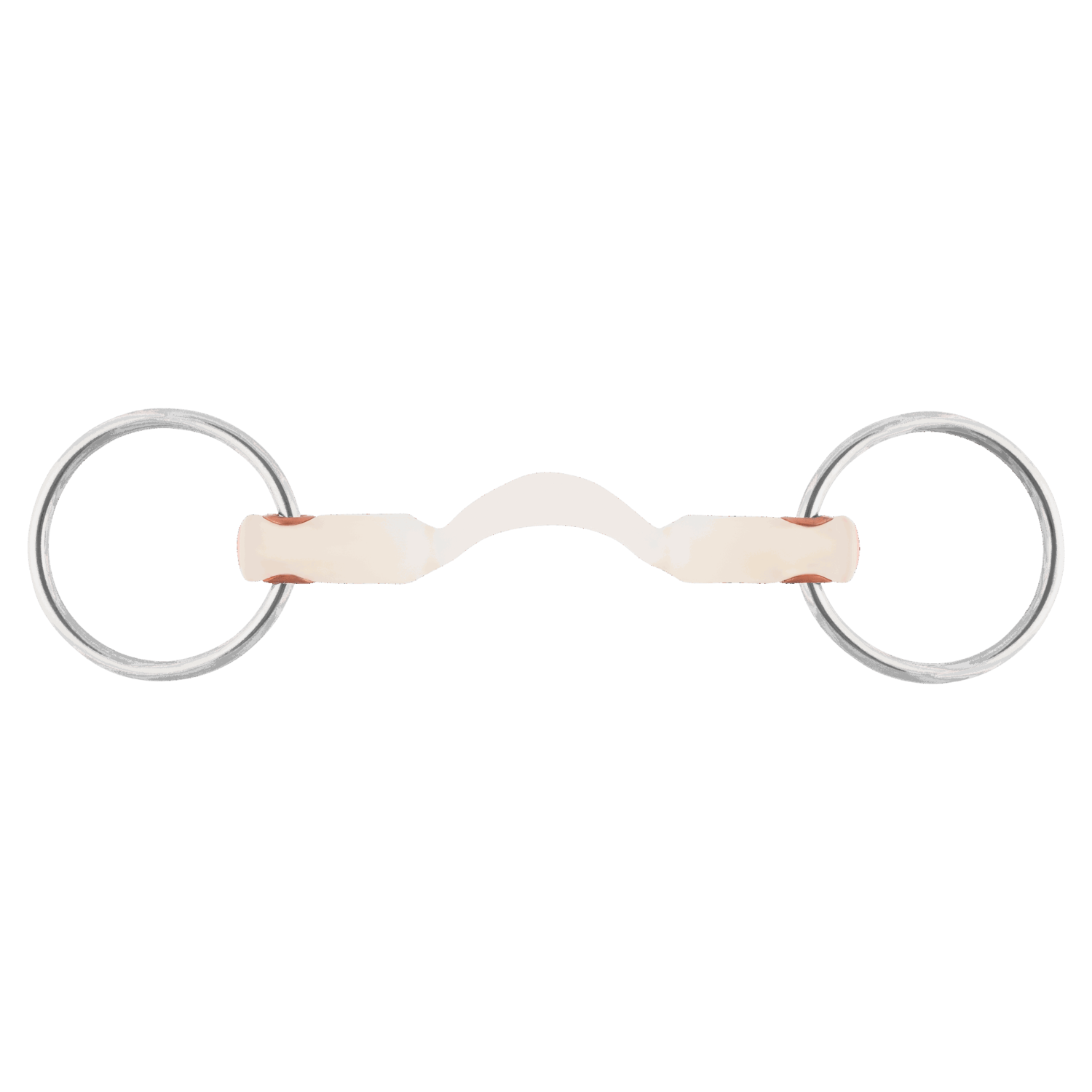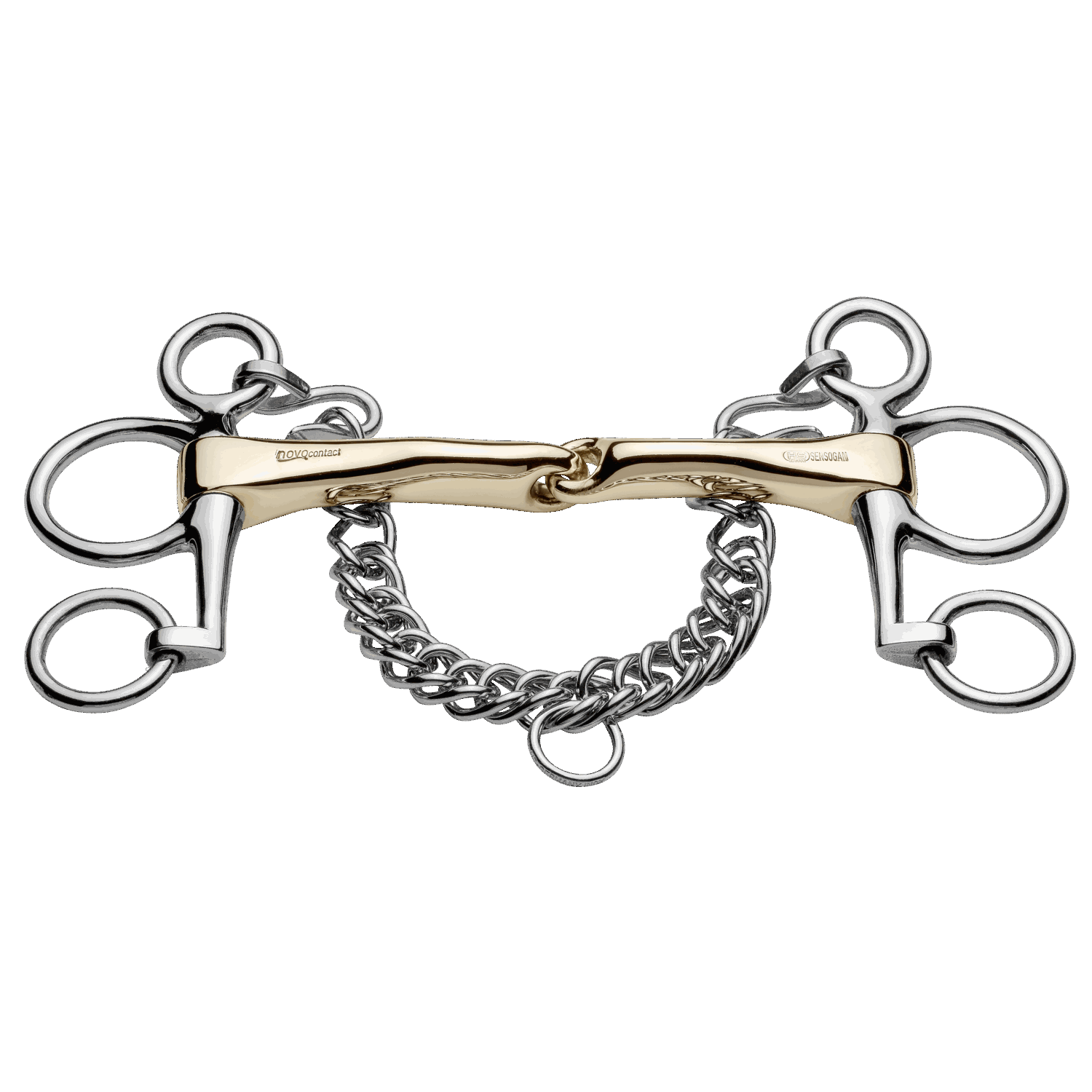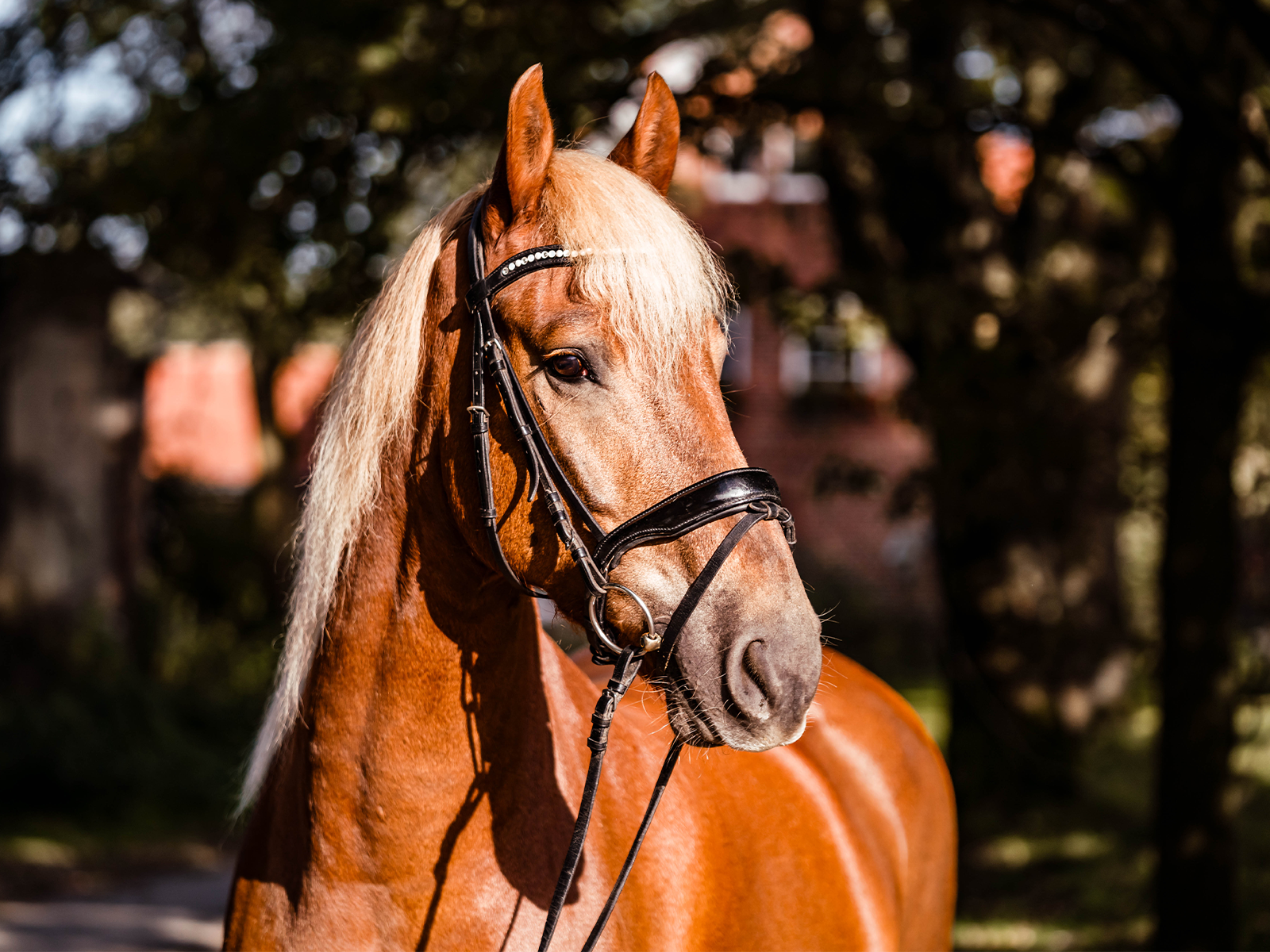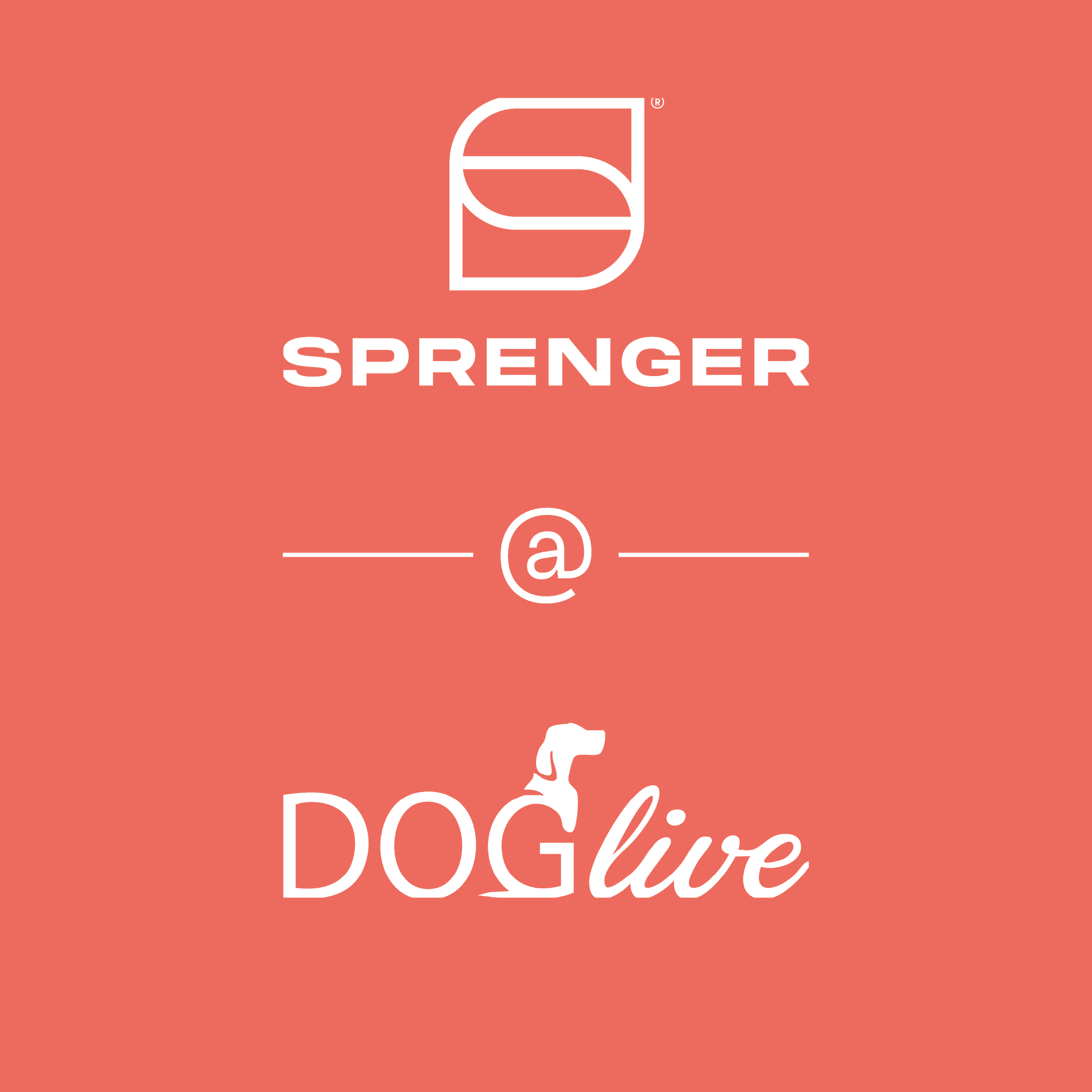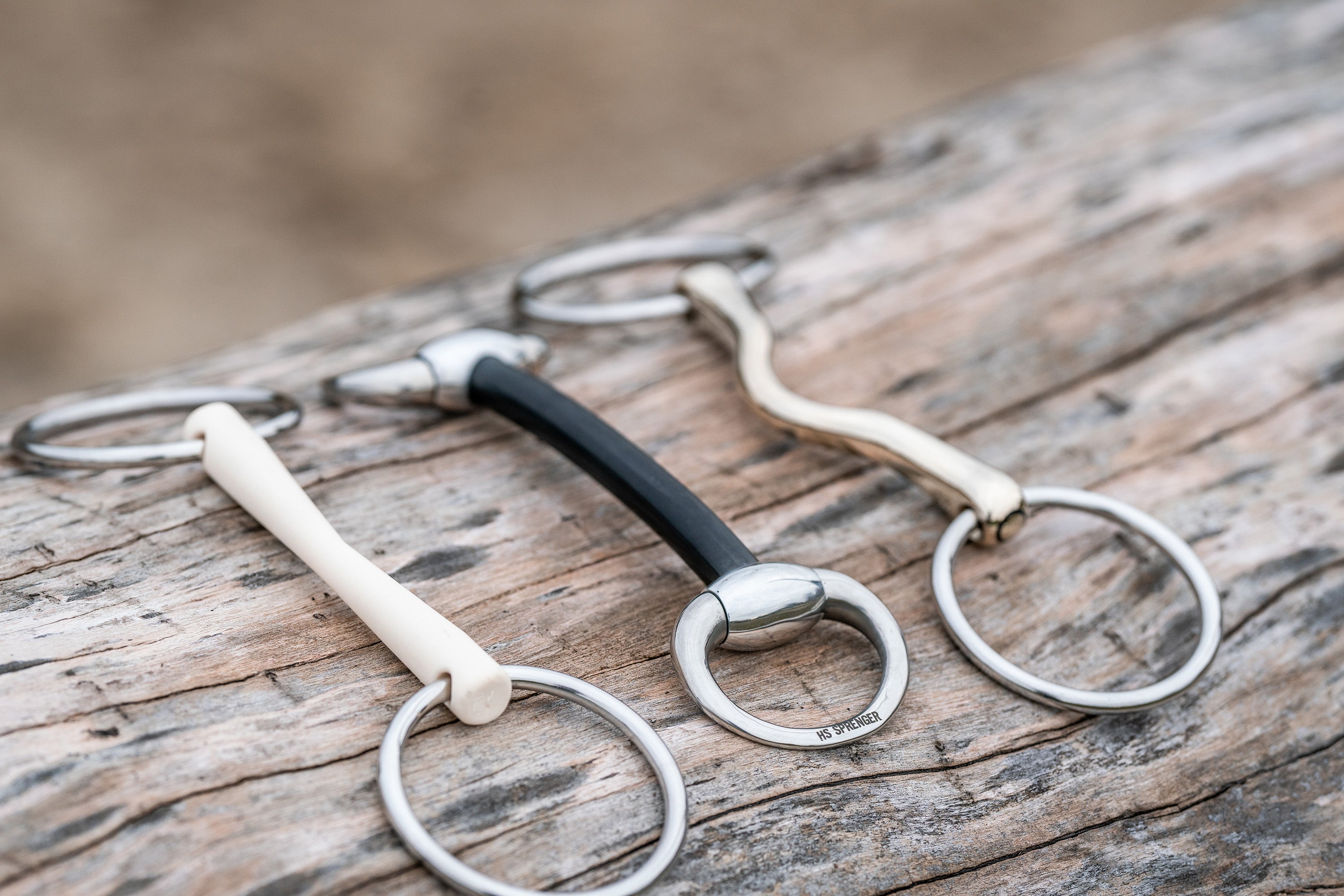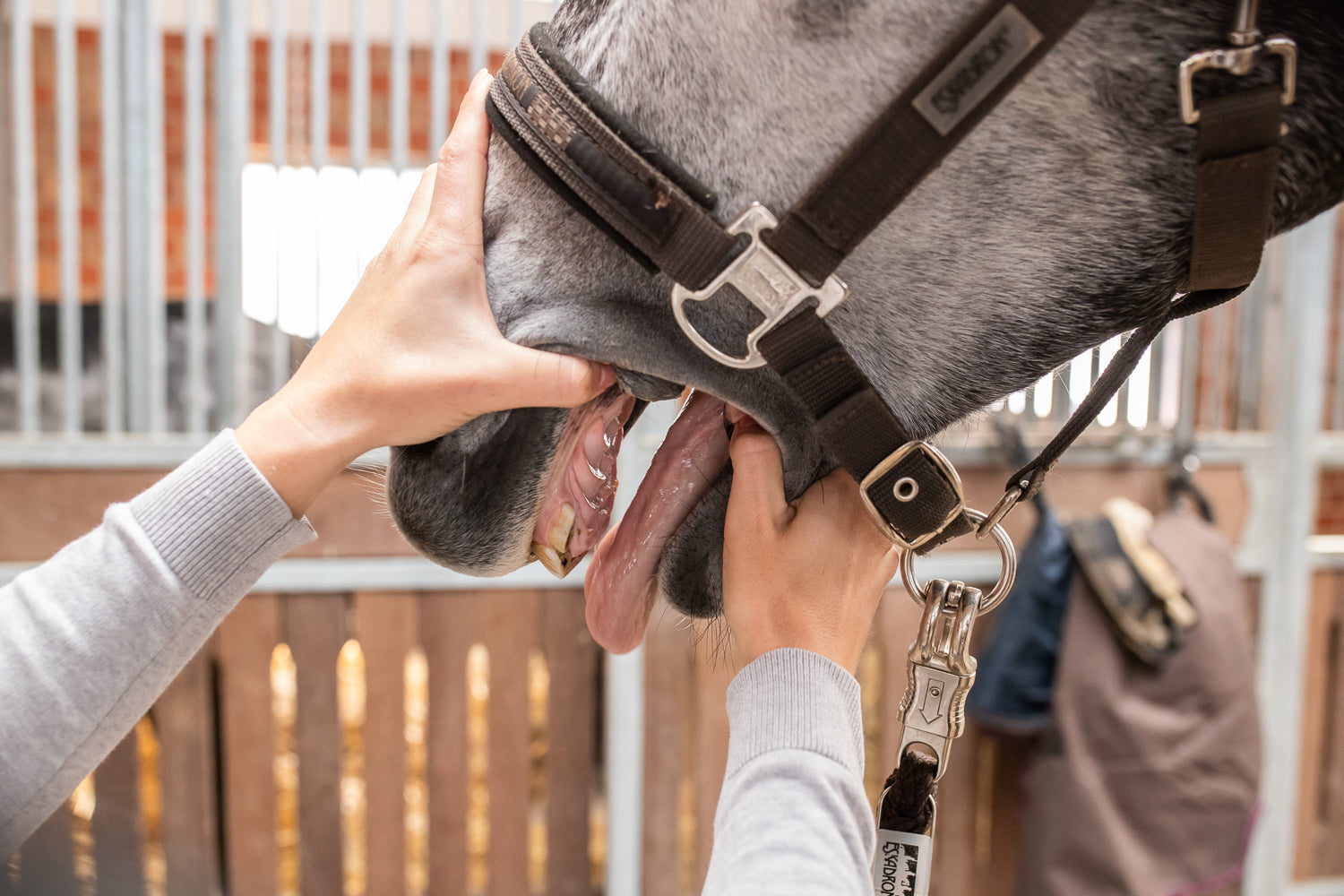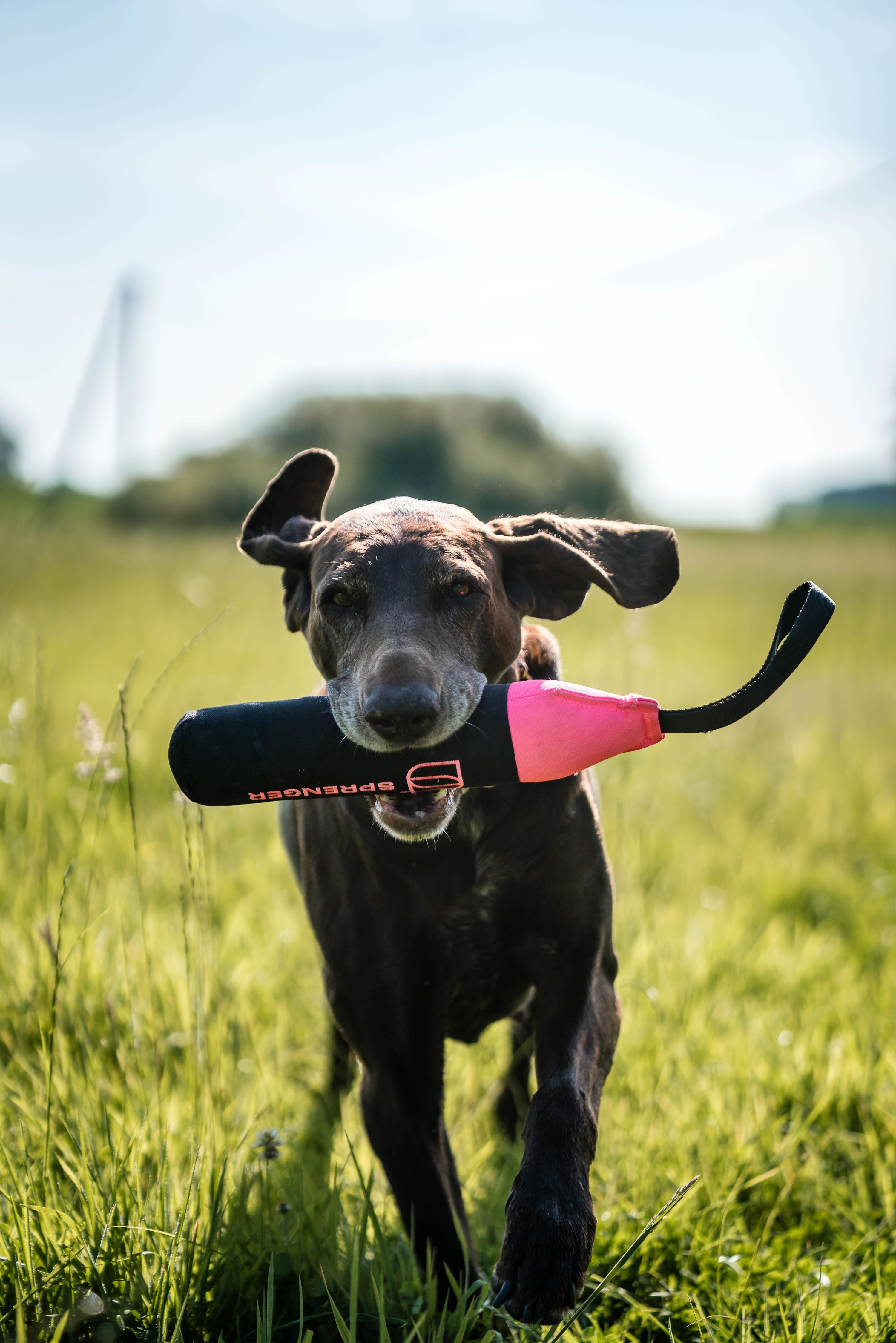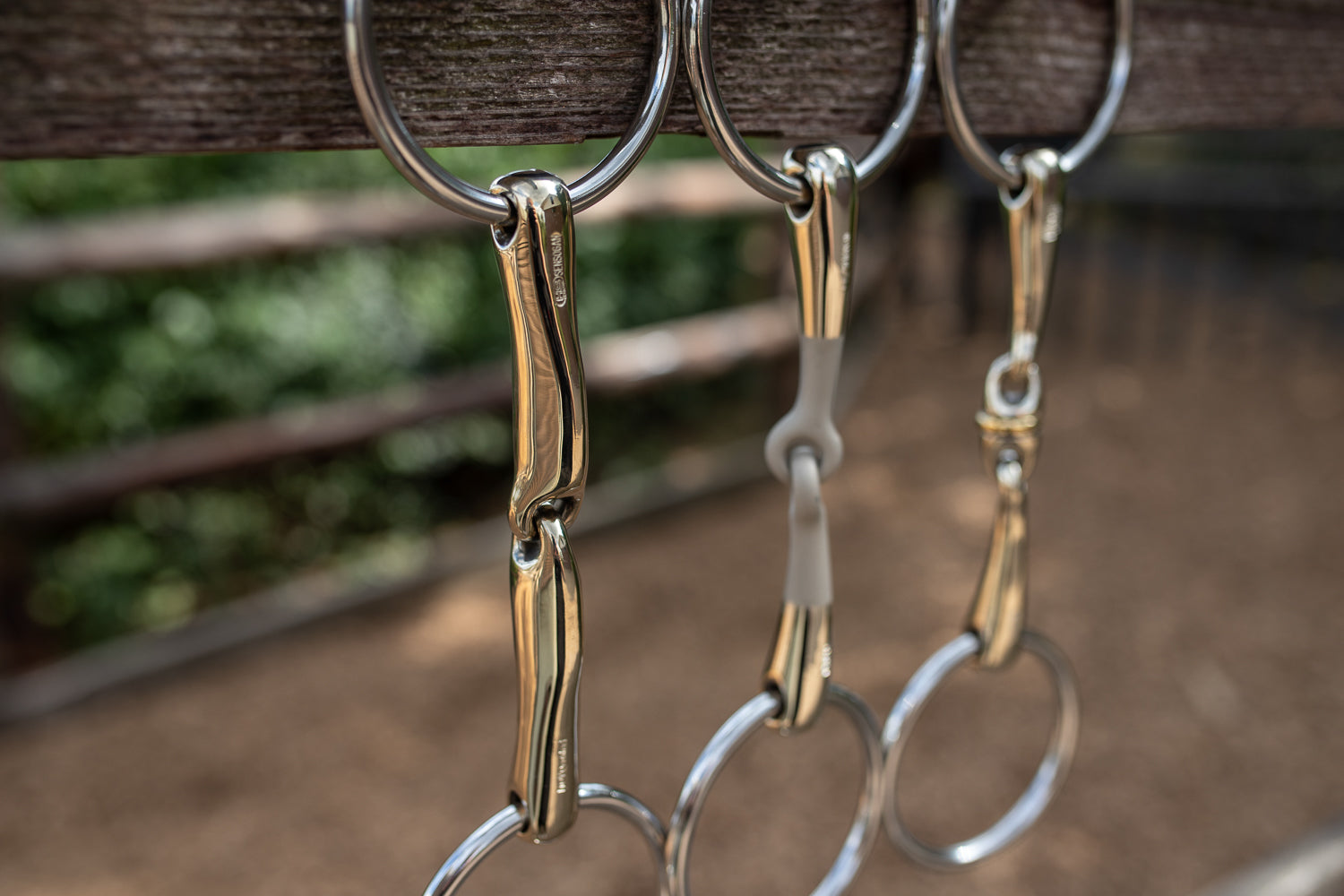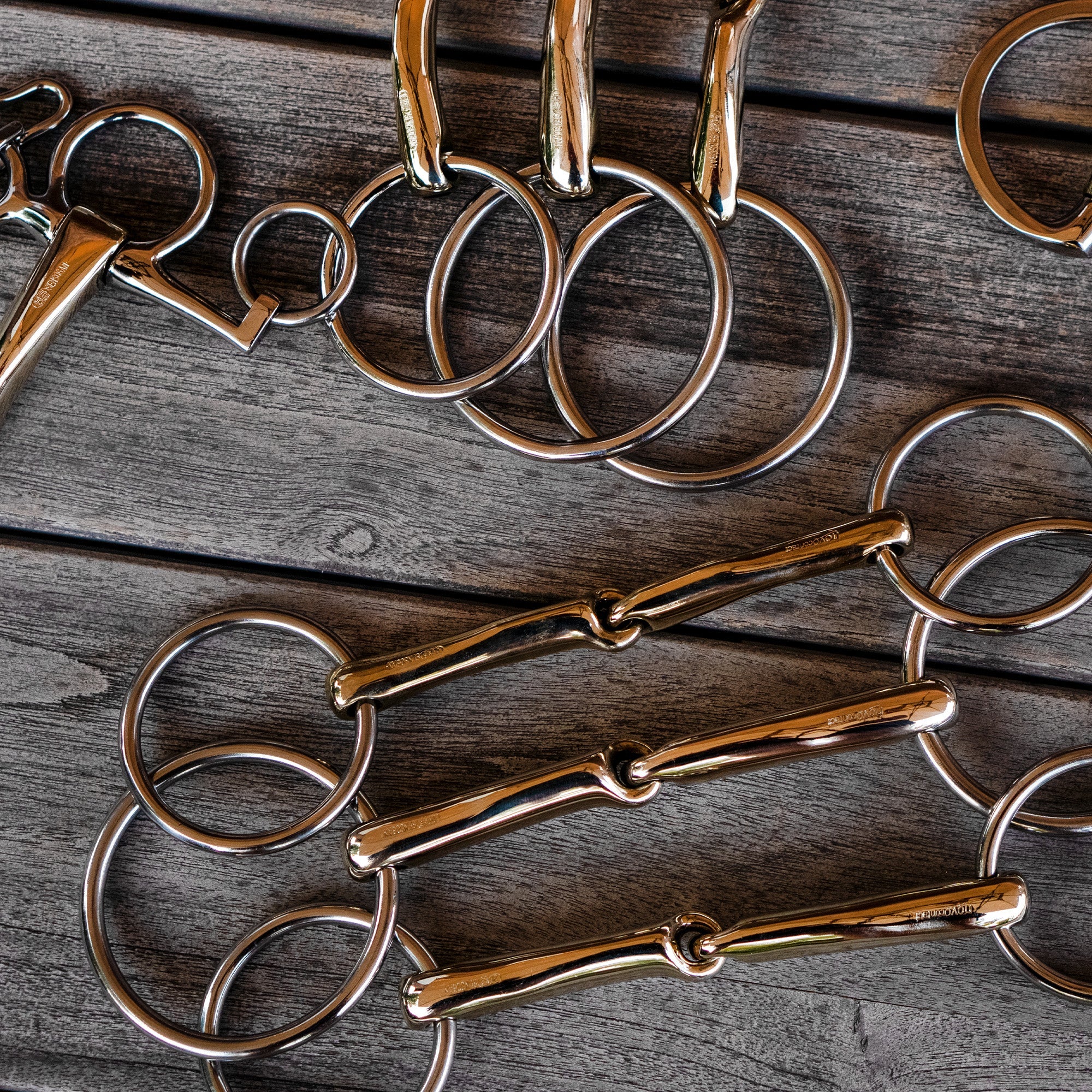We explain everything you need to know about mullen mouth bits, Pelhams, 3-ring bits and gag bits to help you find the right bit for you and your sports partner.
A few tips in advance:
- It is important that your horse is healthy and that the equipment fits well.
- A bit can neither replace basic riding training nor solve rideability or health problems.
- A bit is only as strong as the rider's hand, so you should have a gentle hand that acts independently of the seat.
- As with any bit, it is important to ensure the correct size and fit. You can read more about this in the article 'How do I find the right bit?
Bits are a complex topic on which there are many opinions and experiences. However, very few of these are based on sound specialist knowledge. Riders often hope that changing bits will solve their problems, but this usually only leads to a whole collection of different bits without the problem getting any smaller.
It is therefore important to emphasize that bits are not a miracle cure.
They serve as a means of communication between rider and horse. In order for the horse to understand the rider's signals correctly, the bit must meet the needs of both horse and rider. The challenge here is to find a bit that not only fits the horse's mouth individually (shape), but also achieves the desired effect. That is why we at SPRENGER offer our different bit shapes with a variety of side pieces to provide an optimum solution for every horse's mouth.
If you feel that your current bit is not the right choice for you and your horse, advice from professionals can be helpful. Equestrian stores, trainers, and experienced riders usually have experience with different types of bits. However, this experience cannot always be directly transferred to other rider-horse pairs. The quick tip 'Try a Pelham, it worked well with mine' does not always address individual needs. Often it really is a process of trial and error, as the horse's behavior and reaction to the different impacts is individual.
Some specialist stores also offer SPRENGER test bits so that you can try out a new bit for a few days before buying it.
The most common types of bits
Even if a bit alone cannot solve any problems, the right choice can still make a big difference in the interaction between you and your four-legged partner. Below we have listed an overview of the most common types of bits that are suitable for show jumping and eventing as well as for leisure riders.
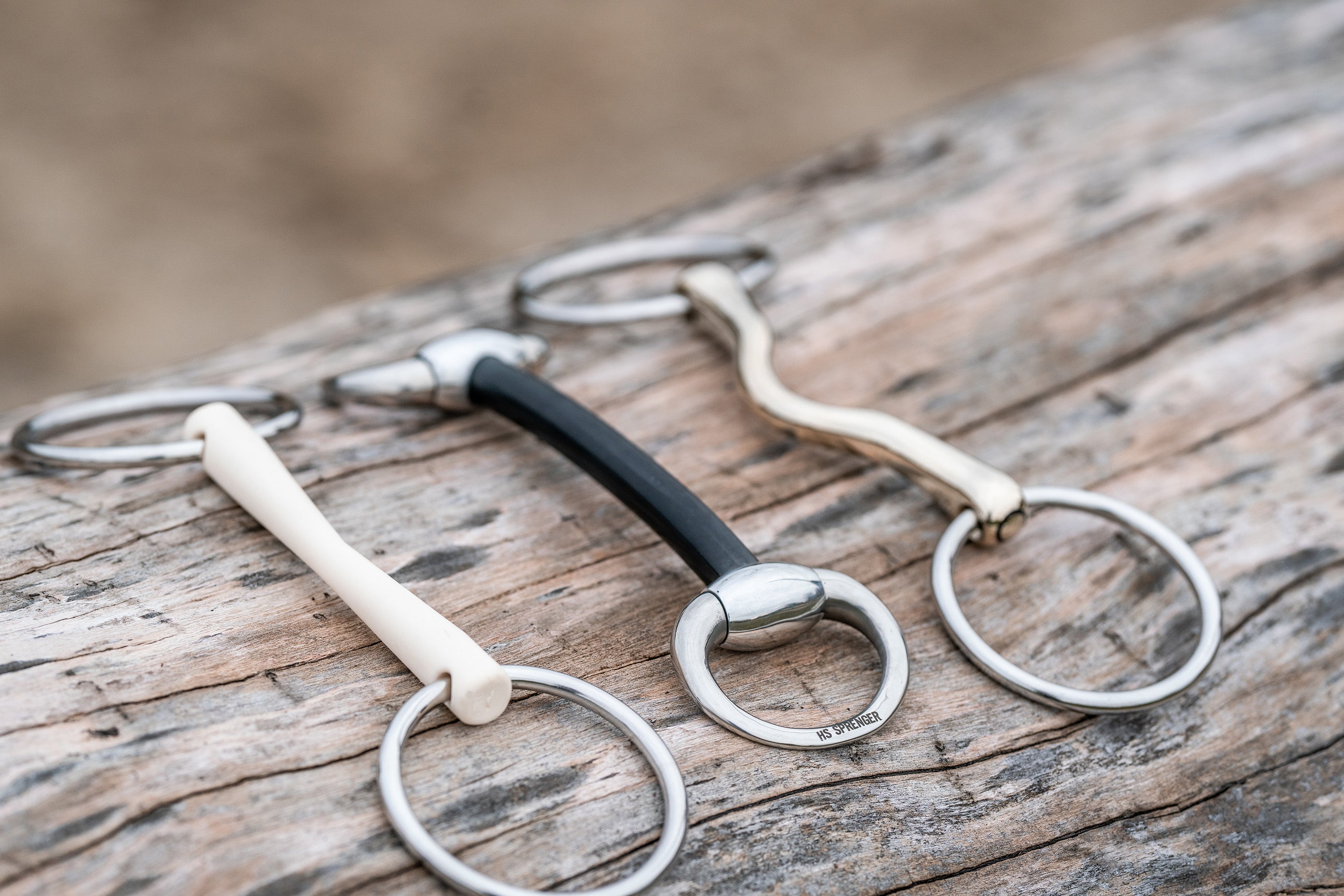
Mullen Mouth Bits
There is a large selection of mullen mouth bits, made of different materials and with various side pieces. All mullen mouth bits lie very steadily in the mouth as they have no joint. However, this characteristic makes one-sided aids impossible. Our NATHE bits are particularly suitable for horses that prefer plastic in their mouth. To ensure safety, most NATHE mullen mouths are fitted with a steel core that protects against being bitten through.
Successful use of mullen mouths requires an even connection to both reins, as they can tilt if the reins are pulled on one side. The rider should therefore be able to ride his horse through the turn using leg and weight aids. Working on position and bending is often not possible with rigid mullen mouth bits and only possible to a limited extent with flexible mullen mouth bits. This type of bit is therefore less suitable for horses that are difficult to steer.

SPRENGER MAX Control
An interesting bit for a stronger actionare lock-up bits, which includes the SPRENGER MAX Control bits. This double jointed bit locks at a certain angle and then works like a mullen mouth. This gives you more control for a short time. As soon as the horse gives way, the bit releases again and acts like a normal double jointed bit. MAX Control bits are suitable for corrections or horses that occasionally need to be reined in more strongly.
Rigid and flexible mullen mouths
Rigid mullen mouth bits exert even pressure on the tongue and are suitable for strong horses that are difficult to regulate. Flexible bar bits such as the Flex Control are suitable for horses that occasionally “seize up” or show impermeability.
Mullen mouth bits with port
In mullen mouths with tongue clearance, the middle of the tongue is relieved and only pressured when the reins are pulled harder. These bits are suitable for horses with a fleshy mouth or for correcting tongue problems.
Bits with a leverage effect
In addition to the pressure on the tongue, bits with a leverage effect also address other areas of the horse's head.
In the case of bits with a leverage effect, other points of action on the horse's head are also addressed, whereby the pressure exerted by a rein aid is distributed to these points of action. Non-leverage bits mainly act on the horse via the tongue, which consists mainly of muscles.
When using leverage bits, the rider acts primarily on the tongue and poll. If a chin chain or chin strap is used to limit the pressure on the sensitive neck, the lower jaw is also addressed. It is important to know how horses react to pressure on different parts of their head and why you want to elicit this reaction.

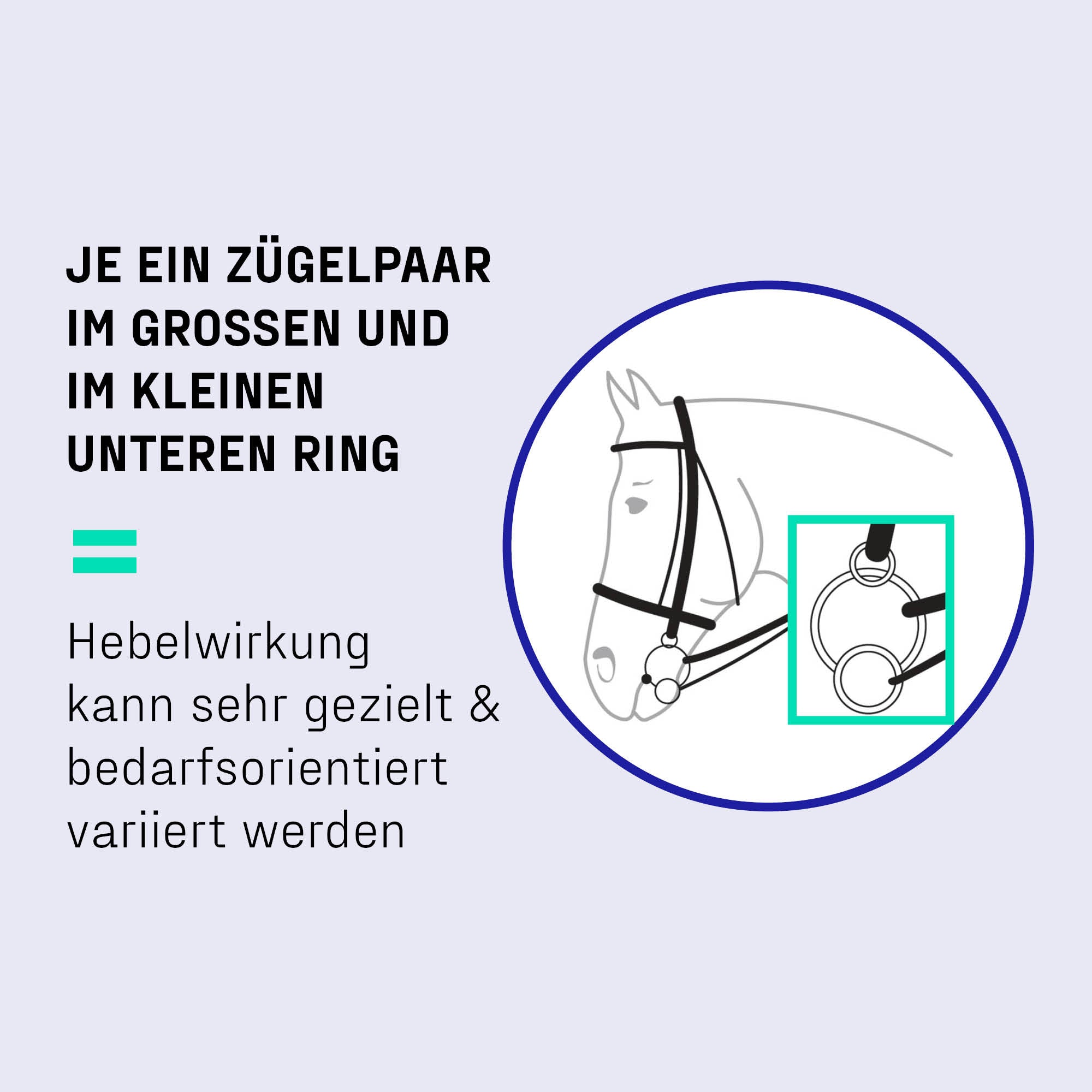

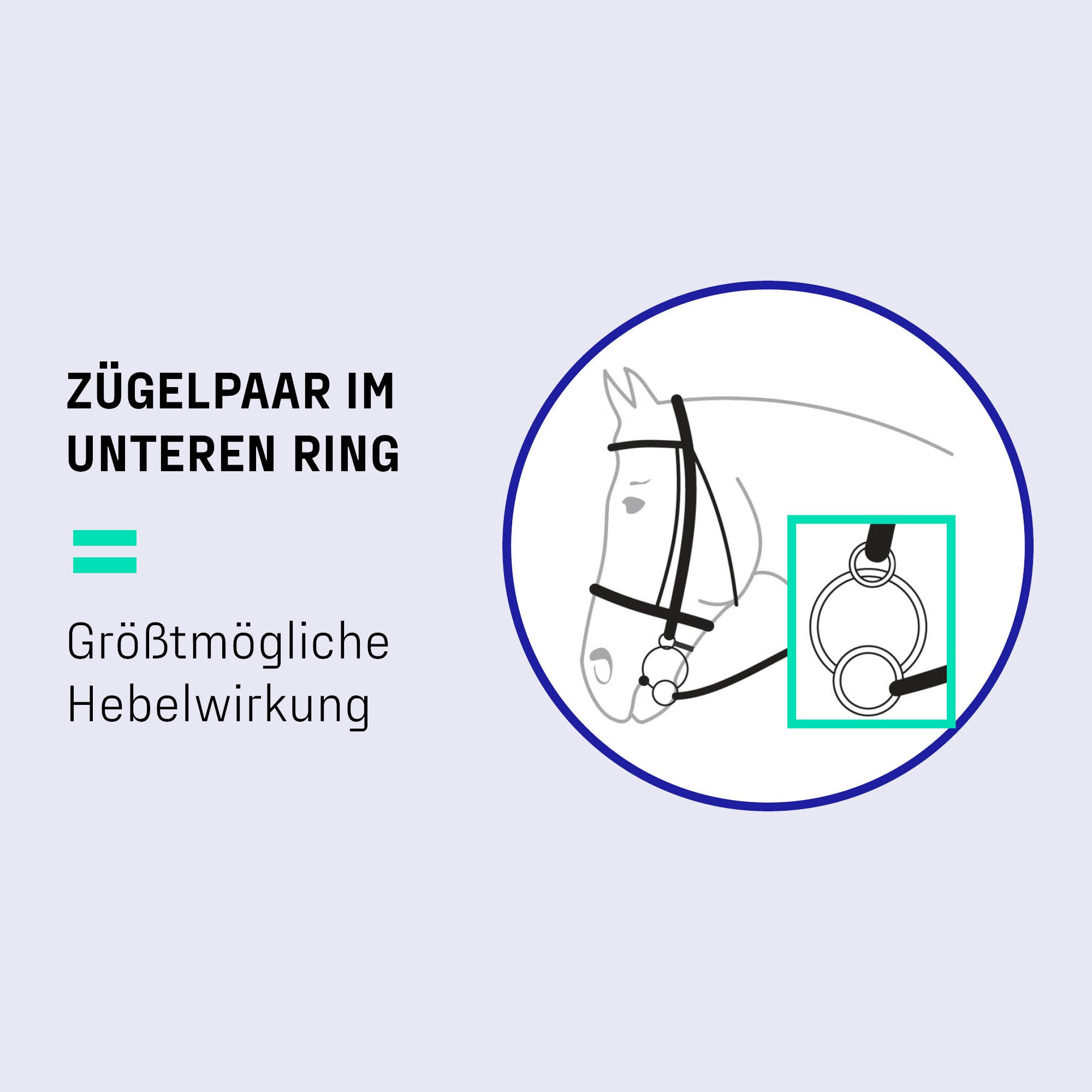
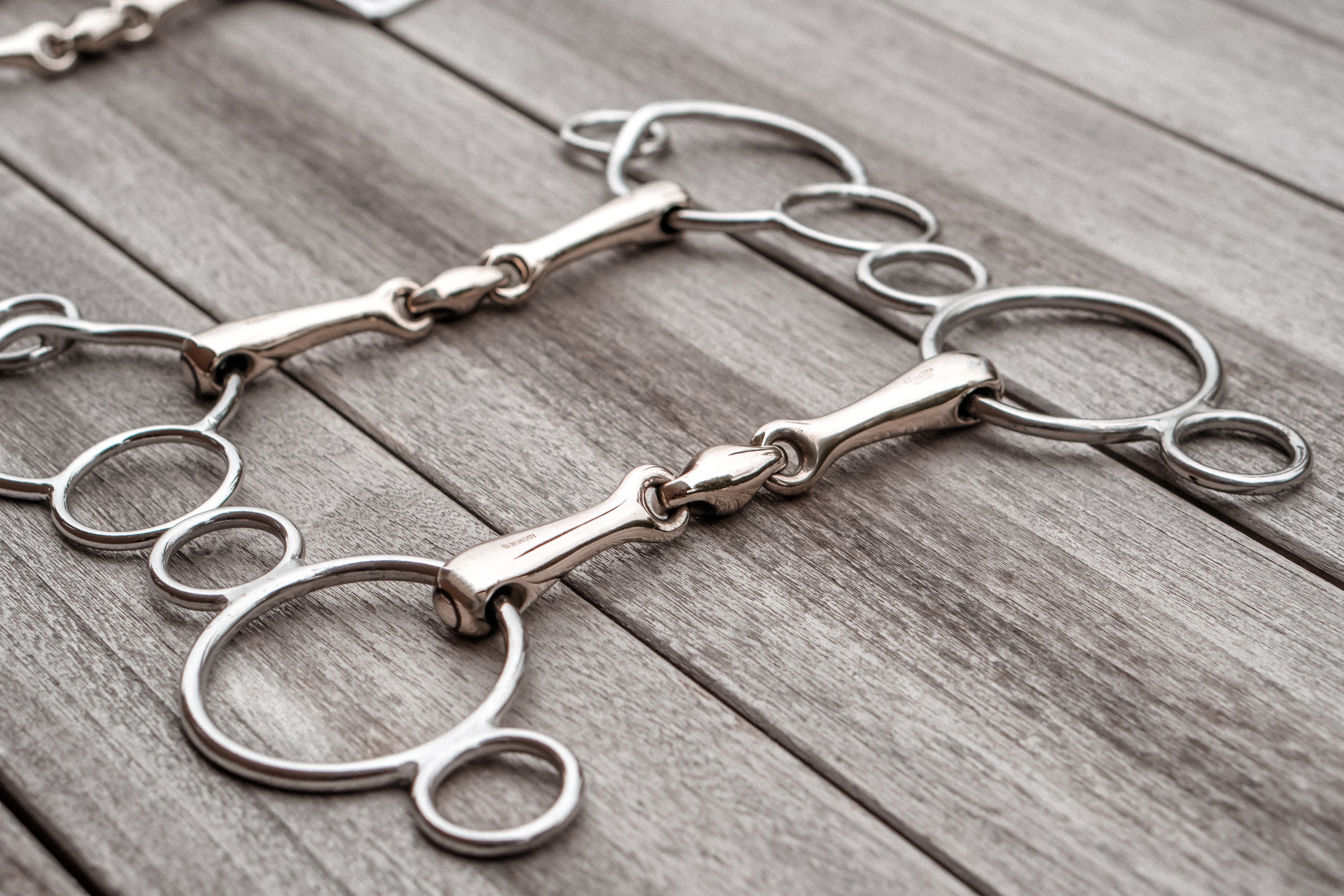
3-ring bits
3-ring bits are very flexible and versatile thanks to the various rein buckling options. The mouthpiece can slide freely in the ring, allowing the poll pressure to be increased largely independently of the pressure on the tongue. This is a particular advantage with spirited or strong horses that react sensitively to pressure on the tongue. This may manifest itself if a horse mainly shakes its head or moves strongly against the hand in situations where the rider has to intervene and thus increase the pressure on the tongue.
A major advantage of 3-ring bits is that they offer various buckling options to adjust the intensity of the leverage. For example, if the snaffle rein is buckled in the normal snaffle ring, there is no pressure on the poll and the effect is similar to a normal water snaffle. However, if the pair of reins is buckled into the lower ring of a 3-ring bit, the rider has the option of adjusting and varying the amount of pressure as required. Pelham bit converters and a chin strap can also be used with a 3-ring bit to vary the neck pressure.
The strength of the poll pressure depends on the length of the leverage of the side piece. There are various models with different lever paths, allowing the intensity of the effect to be varied.
Universal bits
A similar principle applies to universal bits as to 3-ring bits. They are versatile and can be buckled in different ways to adjust the leverage effect. As a general rule, the lower the reins are buckled, the more pressure is exerted on the poll. The greater the leverage, the slower the bit reacts to the rider's hand taking up and yielding.
The use of universal bits requires sensitive and differentiated rein aids as well as a balanced seat on the part of the rider. These types of bits are not suitable for less experienced riders as they require precise handling.

Multi-ring bits
Multi-ring bits have the shortest leverage, as the two small rings are inside the large ring.
The following buckling options are possible with multi-ring bits:
- Cheekpiece in the upper small ring and reins in the large ring = action on the tongue, similar to a normal loose ring snaffle.
- Cheekpiece in the upper small ring and reins in the lower small ring = action on the tongue and poll.
- Cheekpiece in the large ring and reins in the lower small ring = strong effect on the tongue, but no poll pressure.
Due to the short leverage and the associated low poll pressure, multi-ring bits are ideal for horses that occasionally require a little more control but are otherwise sensitive and have good basic training.

The Pelham
With the Pelham, the mouthpiece is firmly attached to the side piece. This means that the bit acts relatively directly on the tongue and ensures a steady position in the horse's mouth. It is ideal if the side pieces are close to the corner of the mouth to provide lateral limitation and prevent slippage. The chin chain should be adjusted so that there is an angle of around 30 to 45 degrees between the cleft of the mouth and the lower jaw. The chin chain limits the pressure on the neck and counteracts excessive rolling in or downward deflection. Due to the sensitivity of the lower jaw in the chin cleft, where the bones are only covered by a thin layer of skin, it is advisable to use padding for the chin chain.
The length of the side pieces also influences the effect of the pelham. Shorter side pieces, for example, react faster than longer ones. Shorter shanks enable a faster reaction, which is particularly advantageous in show jumping. This is why Sprenger mainly produces Pelhams with a short shank to enable a quick reaction and rapid pressure relief.
There are various ways of attaching the Pelham. In most cases, a pair of reins is buckled into a bit converter. However, it is also possible to use just one or two pairs of reins.
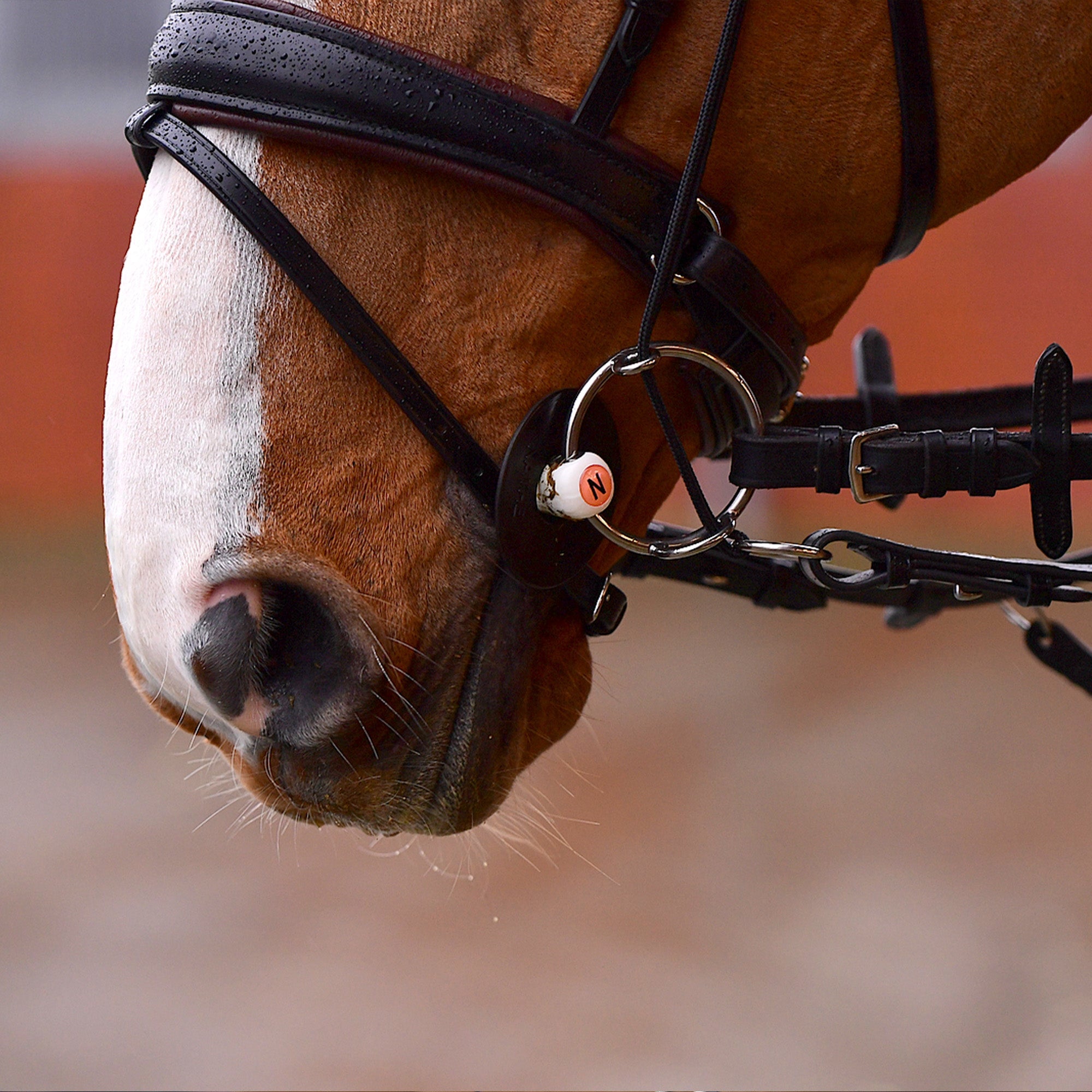
Gag bits
Gag bits also exert pressure on the horse's neck when the reins are pulled. In contrast to 3-ring bits and Pelhams, this type of bit is particularly suitable for horses that lean heavily on the hand or press down hard.
With the gag bit, the cheek piece is passed through the bit ring and attached directly to the reins. When the rider pulls on the reins, the pressure on the poll increases and the mouthpiece moves towards the corner of the mouth. This causes the horse to straighten up and put less downward pressure or weight on the hand. The use of two pairs of reins is ideal, as the rider can exert targeted and effective influence.
The corners of mouth vary greatly between different horses. Some horses have rather fixed mouths that can hardly be moved, while other horses can stretch their corners of mouth several centimeters without showing any reaction. The less flexible the corner of a horse's mouth is, the more it usually reacts to the gag bit.
Find your new bit at SPRENGER
PART OF YOUR PASSION.

